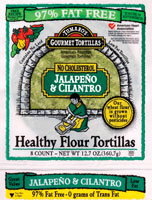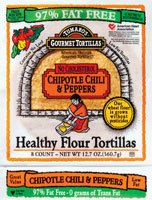
Food connects Hispanics to their heritage, Ricardo Lopez argued at Prepared Foods’ New Products Conference. There is much more to Latino food than the food itself: it is what the food represents. Put simply, food comprises part of their identities as Hispanics, as varied and diverse as that term is.
The Hispanic population is growing more rapidly than any other group in the U.S., which, with 44 million, is already home to the third largest concentration of Hispanics in the world. As Ricardo Lopez, president of Hispanic Research Inc., noted during his presentation “UnderstandingLa Comida Latina” atPrepared Foods’ 2007 New Products Conference, these 44.3 million individuals are unlike immigrants of the past.
“Once, [immigration] was permanent,” Lopez explained, “for religious or political reasons. Now, it is temporary and financially driven. The typical [Hispanic] immigrant today is strongly connected to his culture and is not ‘melting into the pot.’”
Further complicating matters for companies attempting to reach these consumers, many categories are grouped under the label “Hispanic,” which Lopez regards as an “invented category—not a race.” As such, food manufacturers must be aware of the many influences in the “invented” category of Latino food. “Food connects to their heritage,” Lopez argues. “There is much more to Latino food than the food itself: it is what the food represents. In a sense, it defines them: you can’t not talk about the food when you talk about the culture.” Put simply, food comprises part of their identities as Hispanics, as varied and diverse as that term is.
“When we think Hispanic, we [often] think Mexican, but in fact, the demographics are much broader than that. [Technomic has] identified about 11 or so Hispanic subgroups,” says David Henkes, senior principal at Technomic Information Services. “The trick for food manufacturers and the foodservice industry is to avoid the trap of assuming that Hispanics are one big block of people, and instead to target them with foods and beverages and flavors that are appropriate.”
The USDA has defined Hispanic-Americans as Spanish-speaking people of Spain, Mexico, the Caribbean, Central and South America, and other Spanish-speaking countries. The agency notes that the three largest Hispanic groups in the U.S. are Mexicans (with more than 60% of the Hispanic population), Puerto Ricans and Cubans; however, this is by no means an exhaustive list of the groups which fall under the “Hispanic” banner, and as such, it is easy to see the difficulty to be found when attempting to cater to them all.
The USDA has tried to define the preferences of each: “Mexicans favor corn and amaranth. South Americans favor wheat, quinoa and potatoes. Rice is preferred by Hispanics from the Caribbean and coastal regions of Latin America...U.S. consumers of Mexican descent eat the greatest amount of dry beans (almost 34lbs per capita) compared to non-Hispanic whites, who consume only 6lbs per capita…Cubans, Southern Mexicans, Central Americans and Venezuelans use black beans in their cooking. Northern Mexicans, Dominicans and Puerto Ricans use pinto or pinta beans. Cubans, Central South Americans and Hispanic Caribbeans use red kidney beans. Puerto Ricans and Dominicans also use pigeon peas. Chick peas or garbanzo beans are popular with Venezuelans and Brazilians,” to list just a few examples.
Regional variations are rampant, and Lopez notes that Hispanic immigrants in the U.S. are borrowing liberally from each others’ cultures. In the process, manufacturers are adapting with these consumers and producing an interesting effect upon U.S. society, in general.

At this year’s New Products Conference, Ricardo Lopez noted that healthy Latino food is a real trend to watch. At the same time, it is a selling point when marketing Hispanic foods to a mainstream audience.
News of the New
Lopez explains, “Latino food is affecting U.S. society by introducing these flavors to non-Hispanics, particularly a generation that is not afraid of trying something new. Non-Hispanics are really going for new products with Latino flavors.”A Packaged Facts report, “Hispanic Foods and Beverages in the U.S.,” explains what many manufacturers already know: growth within the $5.7 billion Hispanic foods market is driven not only by the growing U.S. Hispanic population, but also by the expanding preferences of non-Hispanic-Americans. "The yearning to experiment with all foods Hispanic,” it finds, “has practically become a Latin fever in the U.S. To catch this wave, food processors and chefs alike have to make a serious effort and investment to acquire the right ingredients. The good news is that the Latin flavors are becoming more and more accessible and affordable."
Certainly, manufacturers will not find success in efforts to lure Hispanics away from their native foods, says Technomic. The group cites one glaring statistic in particular: 40% of Hispanics are likely fully acculturated, which it defines as those born in the U.S. to parents who are U.S. citizens. This leaves 60% who in some way are not acculturated. Technomic finds 13% are unacculturated (born outside the U.S. and having lived less than half their lives in the country), and the remaining 47% are semi-acculturated: born outside the U.S. but having spent more than half their lives in the country.
With a population growing so quickly, it should be no surprise that the purchase power of Hispanics is likewise skyrocketing. “The purchasing power of Hispanics exceeded $863 billion in 2007, marking the first time that Hispanics control more disposable income than any other U.S. minority group,” explains Darren Tristano, executive vice president of Technomic Information Services, publisher of “Hispanic Foodservice Report.” In addition, the Census Bureau estimates Hispanic buying power will exceed $1 trillion by 2011.
“Successful foodservice operators and suppliers will need to keep abreast of what these new consumers will expect on restaurant menus, how frequently they will dine out and how to best serve them,” Tristano notes. Among Hispanic consumers, 58% prefer Mexican cuisine, the Technomic report finds, with Italian a distant second (19%) and American in third place (11%).

Buy and Buy
With such a strong purchasing power and relatively few easy-to-prepare options, Hispanics would seem a prime opportunity for processed food manufacturers, especially when considering an insight of George San Jose. The president of The San Jose Group explains, “Many of these Hispanic consumers do not yet have any strong brand loyalty, because they tend to be younger than the general U.S. population.” He relates two trends for manufacturers to note when working to tap the Hispanic marketplace. First, recognize that Spanish is the language of choice. “The grandparents may still speak Spanish exclusively, while their children may be bilingual, and the 20-something generation may speak primarily English, while still being fluent in Spanish,” San Jose explains. Second, San Jose echoes Lopez when he reiterates that family is very much an integral part of the Hispanic lifestyle.One other important note must be made about the Hispanic population: its youth. Technomic reports that the group is skewing much younger than the rest of the U.S. population: 34% are under the age of 18, compared with 25% of the non-Hispanic demographic. However, addressing health problems is the category where manufacturers may find the most success with this group. As with other demographics, obesity rates in U.S. Hispanics doubled between 1991 and 2001, according to the Latino Nutrition Coalition (LNC), meaning a rise from 11.6% to 23.7% of the population. The National Center for Chronic Disease Prevention and Health Promotion finds 23% of Hispanic males are obese, as are 27.5% of Hispanic females, more than non-Hispanic whites, whose rates are 22% and 21%, respectively.
Hispanic-Americans are 1.9 times more likely to have diabetes than non-Hispanic whites of similar age, finds the National Diabetes Clearinghouse. According to the Centers for Disease Control (CDC), 10.4% of men and 11.3% of women in the Hispanic population have diagnosed diabetes, compared with 7.2% of men and 6.3% of women in the general population.
The LNC has published dietary guidelines for Hispanics, and these guidelines are different from the USDA’s food pyramid. The LNC recommends Latinos consume fewer sweet goods and more foods such as corn, potatoes and beans, as well as more fruits and vegetables “specific to the consumer group, including tomatoes, onions and chili peppers.”
Indeed, manufacturers should not ignore the industry’s other major trends when thinking Hispanic. Lopez notes that healthy Latino food is a real trend to watch and, at the same time, it is a selling point when marketing Hispanic foods to a mainstream audience. The açai berry, for example, is popular in many Hispanic recipes and offers antioxidants, fiber, fatty acids, proteins and other healthy attributes.
Açai is one of many flavors finding favor among the food industry, as reflected in this month’s cover story onPrepared Foods’ “2008 Flavoring Trends Survey,” along with a number of other fruit flavors. As Barbara Jordan, director of R&D and QA with a food supplier, explains, “We’re hearing a lot about tropical fruit: tropical fruits, mango-infused Latin cooking and about the uses of grains, whole foods like black beans, with lots of tropical accents.” The trend is even appearing in the frozen aisles, as ice creams have joined the mango bandwagon; Goya Foods manufactures a Mangos ‘n Cream frozen novelty, a flavor likewise represented in the lineup of Breyers Goya, a partnership between Breyers Ice Cream and Goya Foods.
One company, a supplier of raw aloe vera ingredients, believes such fruits, themselves, can lure consumers. Its market research finds Hispanic consumers have traditionally used herbal ingredients and are, therefore, a prime market for innovative products that make use of botanical ingredients. Furthermore, beverages would appear to be the optimal delivery method for such beneficial ingredients, based on research that finds 94% of Hispanic consumers prefer to enjoy herbal remedies in tea or other beverage forms.
Oneta Company is attempting to capitalize on this with its bottled water, Everest Extra with Aloe. Oneta’s CEO, Karl Koch, had been adamant about including no additives of any kind in its premium bottled water; however, discovering aloe’s efficacy and potential altered his way of thinking. “Many times, I had been tempted to add vitamins or other enhancements to Everest, but I always believed it was best to leave a good product alone. The possibilities inherent in aloe vera juice changed my mind,” he admits.
Açai and aloe are only two examples of Hispanic ingredients finding favor among Hispanics and non-Hispanics alike, while also offering significant potential health benefits. Similar advantages with other Hispanic-centric ingredients could propel consumer interest in the area even further.
